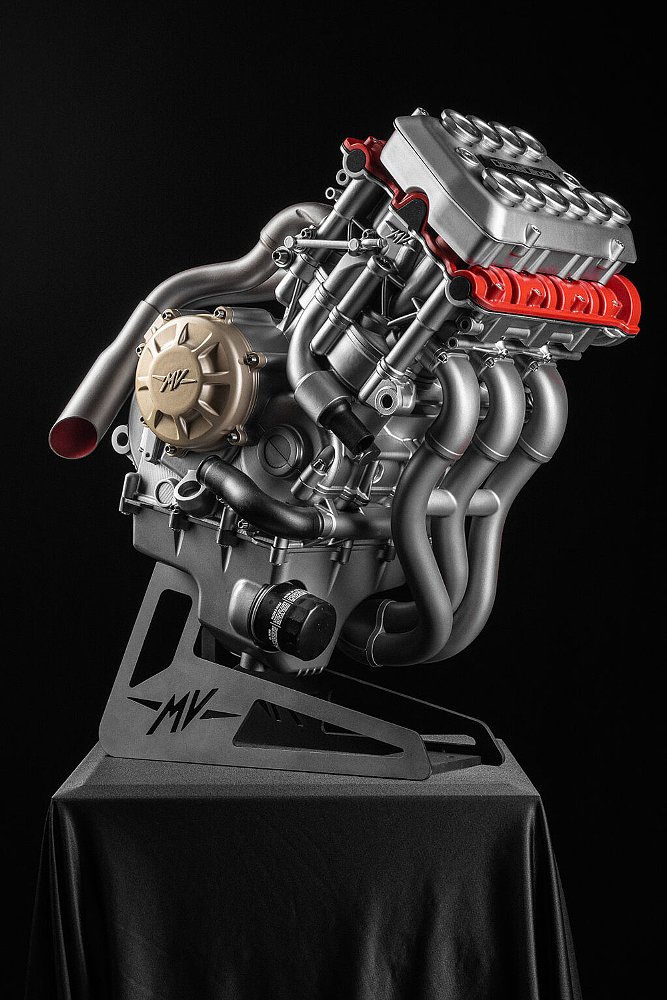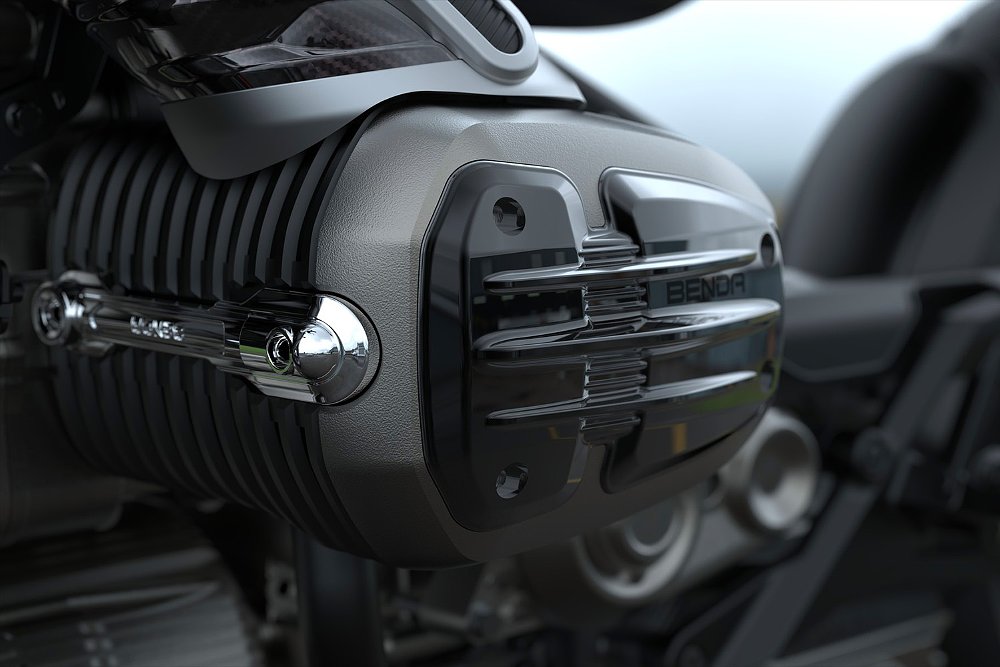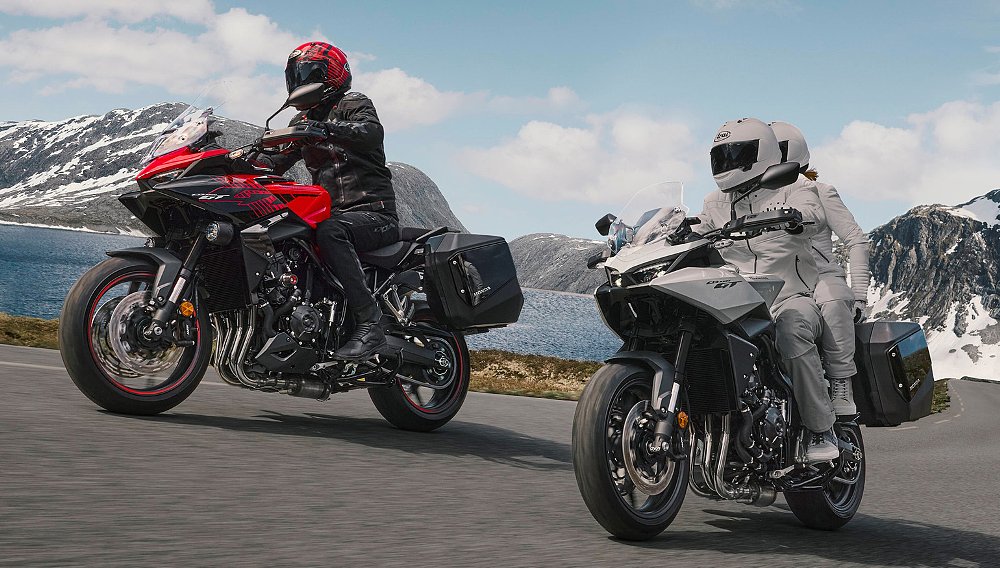Welcome to the age of parallel twins. They’re everywhere — and for good reason.
P-twins are cheaper to produce, cheaper to maintain, and more compact than other multi-cylinder layouts. No wonder they’re so ubiquitous. But at some point, ubiquity gives way to homogeneity. Some might say we’re already there.
The market may be flooded with parallel twins, but two innovative engine designs (from two niche OEMs) suggest that novel solutions are on the horizon.

Take five
MV Agusta’s stable currently includes triples of various volumes (798 cc, 801 cc, and 931 cc) and a 998 cc inline four. If all goes to plan, the brand will add a five-cylinder mill to that lineup in the coming years. It isn’t keeping the details under wraps, either.
With all five cylinders sharing the same head, MV arranges the three-cylinder front crankshaft and twin-cylinder rear crankshaft in a “U” configuration. That distinct layout produces what the firm calls “remarkable smoothness and reduced vibrations.” That’s not the engine’s only advantage, though.
The cylinder arrangement means the “square” five is only as wide as a triple and not as long as a V-twin or a V-four. That compactness benefits any bike, and MV plans to take full advantage by chucking the five-pot platform into everything from supersports to naked bikes to tourers.
As a modular system, the engine is likely to arrive in displacements of 850 cc and 1,150 cc. Although several variants are in development, the powerplant is “capable of delivering over 240 horsepower at more than 16,000 rpm.” MV also claims a peak torque of 99.6 foot-pounds (at 8,500 rpm).
What’s more impressive is that the engine puts up those eye-catching numbers without the assistance of variable valve timing (VVT). In practically every way possible, MV Agusta’s “square” five breaks away from the norms of the day. So too does Benda’s hybrid boxer.

Extra punch
Benda is far from a household name in the United States. After all, the Chinese marque only started shipping motorcycles to North America this past summer. If Benda’s EICMA 2025 exhibit is any hint, that lineup will soon expand, but it’s the company’s P-51 concept that’s worth a deeper look. That's because it harnesses a unique powertrain.
At the core of the P-51 is a 250 cc opposed twin. That’s only half the package, though. Paired with the quarter-liter boxer is a hybrid drive that implements one electric motor on the engine's crankshaft (P1) and another on the transmission output shaft (P3). This arrangement allows the system to operate independently or alongside the internal combustion engine.

While that’s a worthy party trick (especially in emergencies), the hybrid boxer’s output is the real headline here. Benda lists 62 horsepower, 74 foot-pounds of torque, and a curb weight of 178 kg (392 pounds). The single-gear concept also reportedly accelerates from 0-100 km (0-62 mph) in 3.7 seconds.
Unlike MV Agusta, Benda isn’t teasing its hybrid mill in future production models. Still, I’m hopeful the Chinese bike maker brings the boxer to the market. Yes, the recent glut of parallel twins has produced some memorable motorcycles, but the engine ecosystem could sure use some biodiversity.

 Membership
Membership







